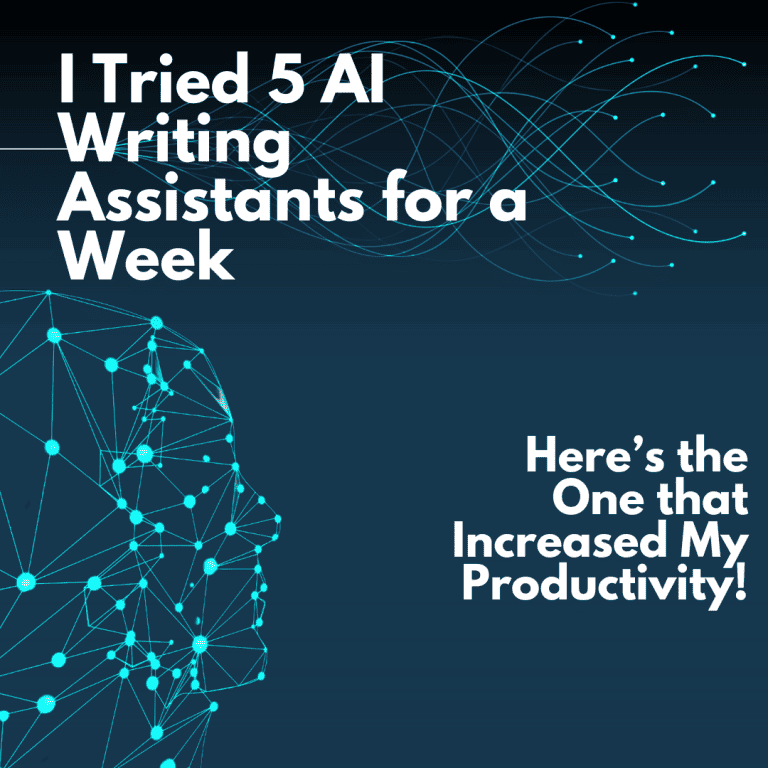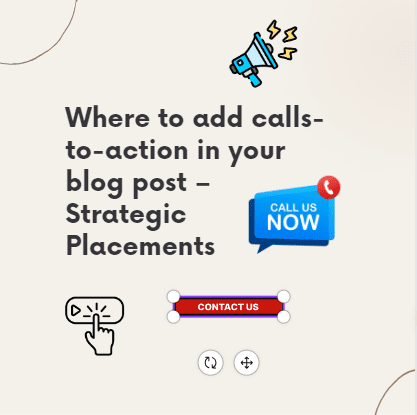The Ultimate Guide to Creating a Content Marketing SOP in 2024
Introduction
Gone are the days when businesses could get away with sloppy, ineffective content marketing. In 2024, well-crafted content that the audience can relate to is necessary to drive real business results. But creating sufficient high-quality, optimized content across multiple channels is easier said than done, especially on a few resources.
Without a solid strategy and process in place, it’s all too easy for your content marketing to descend into an inefficient, chaotic mess that fails to move the needle for your business. You find yourself constantly fighting fires rather than proactively fueling growth through your content efforts.
This is where implementing a tailored content marketing standard operating procedure (SOP) can be transformative. Your SOP is the blueprint that brings order and consistency to your content, transforming previously scattered content activities into a high-performance marketing machine.
A well-structured content marketing SOP makes your processes more efficient, from ideation to publication. It formalizes research, development, and optimization processes and ensures alignment across your team. With everyone working from the same playbook, you reduce duplication of efforts and gaps left unaddressed.
Most importantly, a content SOP leads to higher-quality content output across the board. By having an optimization process tied to business KPIs, you ensure continuous improvement of content and strategy over time.
In essence, an SOP provides the missing structure and guidelines needed to unlock the full potential of your content marketing for business growth in 2024 and beyond. Implemented effectively, the crucial ingredient takes you from a disjointed, underperforming approach to a streamlined content marketing machine optimized for today’s landscape.
This guide will take you through a step-by-step process for creating a best-practice content marketing SOP tailored to your unique business needs. Follow along to transform how you manage content within your organization this year.
Key Takeaways
- A content marketing SOP structures scattered content efforts into an efficient growth engine through standardized best practices for ideation, creation, promotion, and analysis.
- Quantifying goals with a SMART framework – making them specific, measurable, achievable, relevant, and timebound – focuses an SOP on fueling business outcomes directly.
- An editorial calendar mapping out content types, topics, and publication calendars is crucial for organization-wide clarity on upcoming initiatives.
- Optimized creative workflows – from streamlined brainstorms to stringent reviewing checklists – accelerate the path from idea to flawless execution.
- Embedding consistent measurement and improvement processes, powered by analytics tools and audience feedback, enables the continual refinement of strategy over time.
What is a Content Marketing SOP?

A content marketing standard operating procedure (SOP) is a documented process that outlines your team’s procedures for regularly creating, optimizing, and promoting content aligned with your overarching marketing strategy.
It aims to bring structure, efficiency, and alignment to your content activities to drive better performance. A strong content SOP clearly defines consistent processes around research, ideation, development, approval workflows, distribution, promotion, and analytics.
The best SOPs share key characteristics like:
- Clarity – Written in simple, unambiguous language that is easily understood by your team
- Conciseness – Gets straight to the point without unnecessary detail
- Specificity – Custom-tailored to your business’s unique goals, resources, tools, workflows, and metrics
- Adaptability – Flexible framework that can evolve as your needs change
With these core elements covered, your content SOP acts as the go-to reference guide for your team to create effective, optimized content at scale.
Why Do You Need a Content Marketing SOP?
A well-structured content SOP brings immense value by optimizing how your team works. Having a good structure that is easy to follow unlocks substantial efficiency and performance gains.
You can expect several major benefits:
Improved Efficiency
An SOP minimizes ad hoc efforts by standardizing research, development, reviewing processes, etc. With clearer workflows and expectations, your team spends less time figuring out the next steps and can produce more content quickly.
Enhanced Content Quality
When everyone follows the same guidelines for optimization, messaging, and graphics outlined in your SOP, overall quality improves dramatically compared to inconsistent individual efforts.
Streamlined Collaboration
With an SOP, roles and responsibilities are defined explicitly upfront to avoid overlap or gaps. It facilitates cross-functional collaboration to function as a unified content machine.
Better Communication By establishing clear protocols and standards around content in a single, accessible document, your SOP enables understanding and transparency across the team.
Higher ROI
An impact-focused SOP sets standards for measurable objectives and KPIs per content initiative. With guessing eliminated, you allocate budget and resources strategically to best-performing content.
Creating an SOP results in good returns through consistent, high-quality, high-performing content that drives business growth. It is the crucial organizational rigour and structure needed to realize the full potential of your marketing content engine.
7 Steps to Build Your Own Content Marketing SOP
Step 1: Define your goals and objectives.
Establishing clear content marketing goals is the crucial North Star that sets the strategic direction for your entire SOP effort. The priorities you outline here inform everything subsequently, from the processes you codify to the technologies and metrics you use to gauge success.
Common content goals include driving brand awareness, generating leads and website traffic, and boosting conversions and bottom-line revenue. But these can all feel vague or too overwhelming. A SMART framework helps focus on specifics.
- Specific – Outline the specific metrics you intend to improve (e.g. sessions per month)
- Measurable – Quantify each goal (e.g. generate 200 qualified new leads each quarter)
- Achievable – Goals should feel challenging yet realistic
- Relevant – Ensure they align directly with higher-level business objectives
- Time-bound – Set concrete windows for achieving each goal ( 6 months)
So, for example, rather than saying you want to “increase site traffic”, get razor-focused. Set a SMART goal to “Drive 20% more monthly new visitors over the next 12 months”. This focus and clarity pave the way for an SOP that directly powers the outcomes you want to see.
Step 2: Do your research.
With clear goals set, you need to understand your audience inside out. Who specifically are you creating content for? What questions and pain points can you help address through your content efforts?
Leverage data and insights from:
- Customer surveys – Send quarterly surveys to build an empathy map of customer needs.
- Social listening – Set up alerts around your brand and industry on platforms like Twitter and Reddit to find trends.
- Competitor analysis – Review competitive sites and social media to analyze their messaging, offers, and engagement.
- Keyword research – Use tools like Google Analytics, Search Console, and keyword planners to uncover terms and questions your audience uses when finding products online. These should inform your content topics.
Immersing yourself in your audience’s reality through data equips you to create content tailored to their needs and journey stages. It ensures you focus on what resonates most with your target users. After all, views, engagement and conversions flow from solving burning user challenges.
Through surveys, listening, persona research, and keyword analysis, you can gain crucial insight to create an SOP hyper-focused on audience-centred goals.
Step 3: Create an editorial calendar.
With a sharp understanding of your audience and goals, the next imperative step is planning out your content roadmap. This is where creating an editorial calendar comes in – a centralized schedule for what content you will make, when, and by whom.
A strong editorial calendar:
- Structures both big-picture strategy and task-level details in one place
- Clarifies internal workflows and individual responsibilities
- Ensures a balanced variety of content types, including blogs, videos, and eBooks, over time
- Spaces content appropriately to maximize impact
In terms of format, a shared spreadsheet is easiest for most teams to organize and sort. Set up columns for content name, format, publication date, author, creative assets needed, current status, etc., tailored to your needs. With this single source of truth on upcoming projects, your team has clarity and focus to power through content creation according to plan.
Revisit the calendar often as a team during SOP meetings—both to create new entries aligned to emerging goals or trends and to review progress. This rhythmic planning ensures your content evolves alongside your strategic ambitions.
Step 4: Follow a well-planned content development process.
With a steady drumbeat of new content pieces mapped out in your editorial calendar, you need to establish efficient systems for bringing each piece to high quality. Codify processes for the key stages:
Ideation and Brainstorming
We have recurring 30-minute team ideation sessions to outline 2-3 new pieces of content. We maintain an evolving editorial calendar bank of ideas. We frame ideas around goals, emerging audience needs, and gaps competitors miss.
Writing and Content Creation
Whether writing a blog, social posts, or video scripts, maintain an engaging style focused on solving audience needs in your industry niche. Use simple language, thoughtful analogies, and a conversational flow when writing. Depend on AI writing assistants to save time creating draft content.
Editing and Proofreading:
Every piece of content should go through peer reviews by at least two team members before publishing. The first reviewer focuses on improving the content’s relevance to the goals reader experience. The second reviewer targets technical aspects and SEO – keyword placement, links, and meta descriptions.
Formats and Optimization
Every blog needs featured visuals and clear H2 headers to improve skimmability. Videos should have professional custom thumbnails and be close-captioned. Landing pages must include relevant conversion elements, such as email forms and calls to action.
Rinse and repeat for every new piece of content to ensure high standards. Over time, refine processes based on performance data and feedback.
Well-designed systems free your team from constant ad-hoc groundwork and allow them to focus on flawless execution. This clarity accelerates content progress from conception to publication.
Step 5: Analyze and measure results.
The proof lies in the pudding, as they say. No matter how slick your ideas are or how polished your content is, what matters is real-world performance and impact. That is why baking measurement deeply into your SOP is non-negotiable.
Establish processes for regularly monitoring and analyzing key metrics across your content.
- Website traffic – Track unique visitors, repeat visitors, session durations and other stats through Google Analytics to determine reach. Compare performance across the last 3-6 months.
- Engagement – Social platforms provide rich analytics. Monitor shares, link clicks, content downloads and conversion actions.
- Leads/sales—Tie content directly to lead generation forms, phone, and email leads. Track the number of results from each piece.
You can iterate and improve your SOP and future content marketing strategy based on what performs well and where gaps exist for optimal business outcomes. It’s worth experimenting with promotion channels, too—paid social vs organic, email vs social media.
Regular measurement provides the vehicle to continuously align processes, teams, and tools to determine what moves the needle most for your goals. It’s essential fuel for the content machine.
Step 6: Rinse and repeat.
You now have a blueprint encompassing goals, workflows, assignments and measurement protocols customized for your team. The real momentum builds when everyone consistently adheres to the SOP rhythm over months and quarters.
That means regularly revisiting your editorial calendar to populate new ideas, sticking to defined development and publishing protocols, and analyzing what works well. Consistency is key to meeting audience expectations and maximizing team efficiency through established systems.
Equally crucial, though, is welcoming change. As you accumulate performance data and additional audience insights, periodically update your SOP details to meet evolving needs better. Add emerging channels like TikTok. Streamline review processes. Tighten up SOP meeting cadences across teams.
Consider your SOP a breathing framework that expands and contracts fluidly while providing core structure. By maintaining dynamic consistency amidst change, your content and SOP evolve into well-oiled machines generating business growth.
Step 7: Be prepared to make necessary changes to your strategy.
Even after all that meticulous planning and process development, the world keeps rapidly changing. Your audience evolves, market dynamics shift ever so subtly, and your own goals transition over time as well.
What was a flawless content SOP last year may gradually grow outdated, failing to move the needle due to lack of relevance. That is why baking in agility and continuous learning is critical.
Schedule bi-annual reviews to assess which aspects of your current SOP are strong and which need rethinking. Monitor market trends in your space for sparks of ideas. Poll customers and your team to spot gaps in existing content workflows.
While maintaining a consistent core SOP, be ready to make incremental changes when existing methods stagnate. Whether revamping ideation techniques or using new collaboration tools, balanced adaptability ensures your processes stay razor-focused on business results.
After all, the markets reward those most responsive to evolving customer needs. An adaptable SOP is the vehicle that gets you there.
Additional Tips and Considerations
Beyond core workflow development, a few additional best practices take your SOP execution to the next level:
Enforce Quality Control
With volumes of content being produced regularly, maintaining high quality across the board is challenging. Create an internal style guide establishing tone of voice, branding, and image use guidelines. Make technical quality control mandatory by a separate set of eyes before publishing. Schedule periodic reviews of metrics by content type to spot gaps.
Facilitate Team Collaboration
Your SOP is only as strong as the team executing it day-to-day. Foster connections and understanding between cross-functional teams through monthly catches up over coffee. Maintain an open culture that encourages giving constructive feedback on existing processes. Recognize members who excel in executing the SOP with the rest of the organization.
Maintain Your SOP
Revisit your documented SOP quarterly to evaluate if everything accurately reflects current priorities and processes. Are all recent roles and content types accounted for? Make iterations if needed while keeping the core structure consistent for team continuity. Share lessons learned company-wide.
Beyond output, your SOP influences how your team connects and works behind the scenes. By proactively strengthening relationships, clarity and culture around content, your workflows transform from mundane documentation to dynamic game plans powering human excellence. And that ultimately elevates marketing performance exponentially more than any process can achieve.
Conclusion
Creating a sustainable, scalable, optimized content marketing machine doesn’t happen accidentally. But by following a structured step-by-step process to define, build and refine your team’s SOP, you put the crucial framework for rapid, data-driven growth through your content efforts.
This guide covered the fundamentals, including establishing clear marketing goals, deep audience research, performance tracking, and change adaptability. Combined with these key building blocks, you transform content chaos into well-oiled creativity processes that power business results.
Some key highlights include:
- Creating an editorial calendar for publishing different formats and topics over time
- Quantifying goals using a SMART framework – Specific, Measurable, Achievable, Relevant and Timebound
- Baking consistent measurement and optimization workflows into each piece of content
If you walk away having implemented even a few of these SOP best practices, you’ll notice remarkable efficiency, quality and overall marketing performance improvements.







